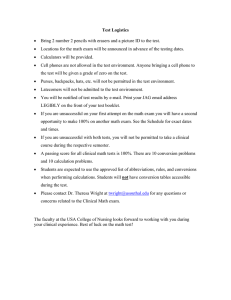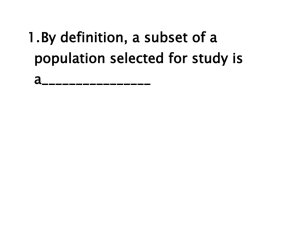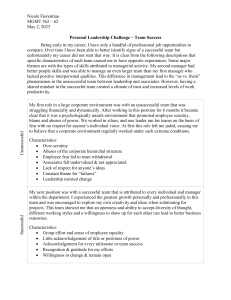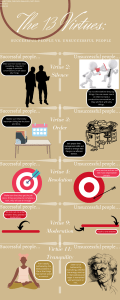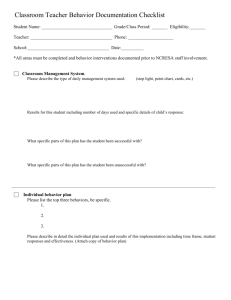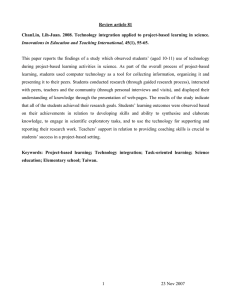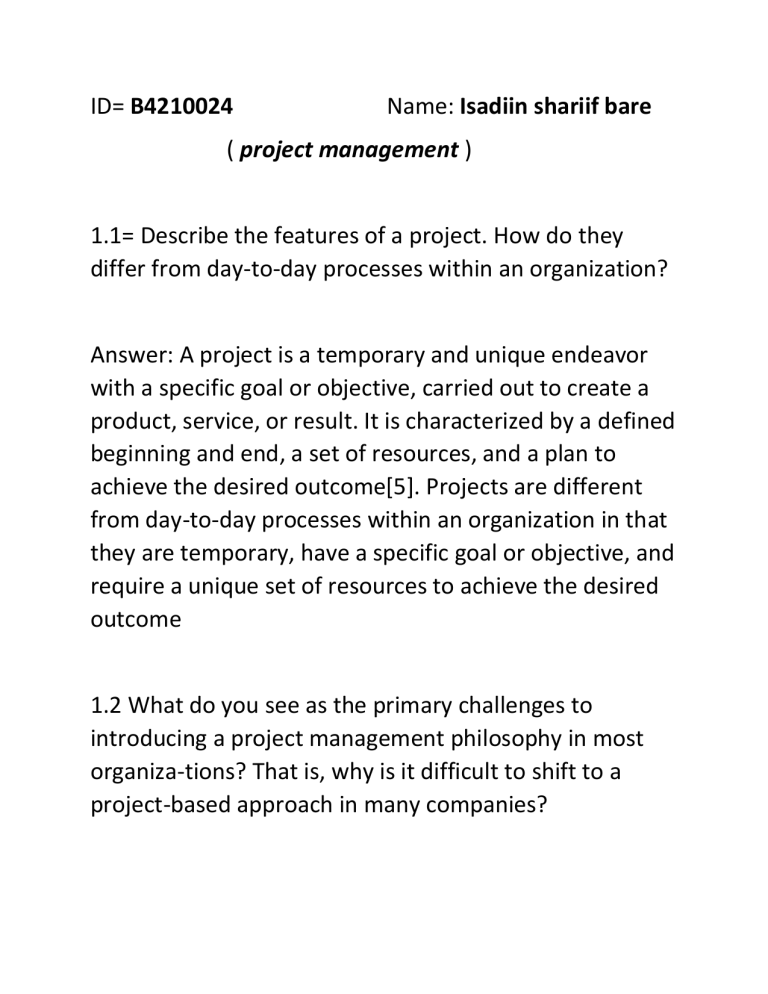
ID= B4210024 Name: Isadiin shariif bare ( project management ) 1.1= Describe the features of a project. How do they differ from day-to-day processes within an organization? Answer: A project is a temporary and unique endeavor with a specific goal or objective, carried out to create a product, service, or result. It is characterized by a defined beginning and end, a set of resources, and a plan to achieve the desired outcome[5]. Projects are different from day-to-day processes within an organization in that they are temporary, have a specific goal or objective, and require a unique set of resources to achieve the desired outcome 1.2 What do you see as the primary challenges to introducing a project management philosophy in most organiza-tions? That is, why is it difficult to shift to a project-based approach in many companies? 1. Change Resistance: People often don't like change, and a project-based approach can be a big change. 2. Skill Gap: Not everyone knows how to manage projects. If the staff lack training, it can be hard to implement. 3. Resources: Shifting to a project-based approach can require more time, money, or staff, which may not be available. 4. Culture Change: A project-based approach might require a different way of working, which can be tough to adopt. 5. Lack of Support: If the top management doesn't back the change, it can be difficult to implement. 6. Business Goals: If the project-based approach doesn't align with the company's goals, it can be hard to justify the change. 1.3 What are the advantages and disadvantages of using project management? Advantages of Project Management: 1. *Clearly Defined Objectives*: Project management helps organizations set clear objectives for projects. It ensures that stakeholders and team members understand what is expected of them and how their work contributes to the overall project. 2. *Improved Efficiency*: By managing tasks, allocating resources, and reducing roadblocks, project management enhances team efficiency. This leads to cost savings and prevents projects from exceeding budgets. 3. *Better Communication and Collaboration*: Effective communication fosters collaboration among team members. Sharing ideas, concerns, and working toward common goals becomes easier with project management. 4. *Accurate Risk Assessment*: Project management allows calculated risk-taking. Identifying risks early helps in resource allocation and efficient planning¹. ### Disadvantages of Project Management: 1. *High Costs*: Implementing project management can be expensive, especially for smaller companies. Training employees on new systems and tools adds to the cost³. 2. *Reliance on Technology*: Project management often relies on software and technology. Organizations must ensure that employees are familiar with these tools to avoid disruptions. 3. *Complexity and Resistance*: Transitioning to a project-based approach can be complex. Cultural resistance, organizational structure changes, and risk aversion may hinder adoption¹. 1.4= What key characteristics do all projects possess? In project management, all projects, regardless of their size or complexity, generally share these key characteristics: 1. Uniqueness: Every project is unique. It has a specific set of objectives and is usually designed to bring about beneficial change or added value. 2. Temporary Nature: Projects have a defined start and end. They are not ongoing efforts and have a specific duration to deliver the intended output. 3. Purpose: Each project has a clear and defined purpose or goal. It could be creating a new product, improving a process, or implementing a new system. 4. Specific Deliverables: Projects result in a specific outcome, product, or service. The deliverables are tangible and measurable. 5. Resources: Projects require resources, which could include people, materials, equipment, and financial resources. 6. Risk and Uncertainty: Projects generally involve a level of uncertainty and risk. This could be due to factors such as time constraints, cost overruns, or unanticipated problems. 7. Change: Projects often bring about change in an organization. This could be a change in processes, systems, products, or services. 8. Cross-Functional Teams: Projects often involve a team of individuals who may not usually work together. These could be people from different departments or even different organizations. 1.6= Think of both a successful project and an unsuccessful project with which you are familiar. What distinguishes the two, both in terms of the process used to develop them and their outcomes? = a successful and an unsuccessful project that I am familiar with, both based in Somalia: 1. Successful Project: A project that I am familiar with is the "Somalia Emergency Drought Response and Recovery Project (SEDRP)" supported by the World Bank. Initiated in 2018, the project aimed to address the immediate effects of the severe drought in Somalia by providing support to affected households and strengthening the capacity of the government to respond effectively to future crises. The project was successful due to its welldefined objectives, adequate resources, and effective implementation. It managed to reach 1.77 million people with cash transfers to help them cope with the drought. 2. Unsuccessful Project: On the other hand, a project that I am familiar with and didn't meet its objectives was a road construction project in Somalia. The project aimed to build a network of roads to connect different regions of the country and boost trade and economic activity. However, due to a lack of proper planning, inadequate resources, and security issues, the project faced numerous delays and cost overruns. Ultimately, it failed to deliver the intended outcomes within the specified timeline and budget. In summary, the key distinguishing factors between the two projects were the clarity of objectives, availability of resources, planning, and execution. The successful project had all these elements, while the unsuccessful project fell short, leading to different outcomes. ( ANOTHER WAY OF EXPLAINING ) Successful Project: Process Used: o Clear Planning: The successful project had a well-defined plan from the beginning. Goals, milestones, and resource allocation were carefully thought out. o Effective Communication: Team members communicated openly, shared progress, and addressed challenges promptly. o Risk Management: Risks were identified early, and mitigation strategies were in place. o Adaptability: The project team adjusted to unexpected changes without losing sight of the end goal. Outcomes: o Cost-Efficient: The project stayed within budget or even came in under budget. o Timely Completion: It finished on schedule or ahead of time. o High Quality: Deliverables met or exceeded expectations. o Smooth Transition: The project seamlessly integrated into existing operations. Unsuccessful Project: Process Used: o Lack of Planning: The unsuccessful project lacked a clear roadmap. Goals were vague, and resources were poorly allocated. o Communication Breakdown: Team members didn’t collaborate effectively. Misunderstandings and conflicts arose. o Risk Ignored: Risks were overlooked, leading to unexpected setbacks. o Resistance to Change: The team struggled to adapt when faced with challenges. Outcomes: o Cost Overruns: The project exceeded the budget significantly. o Delays: It missed deadlines, causing frustration. o Quality Issues: Deliverables were subpar or didn’t meet requirements. o Disruption: The project caused operational problems during implementation. In summary, successful projects thrive on planning, communication, adaptability, and risk management, while unsuccessful ones suffer from poor processes and undesirable outcomes. 🌟 (ANOTHER EXAMLE OF SUCCESSFUL PROJECT AND UNSUCCESSFUL PROJECT) Successful Project: A successful project I can think of is a hypothetical "Agricultural Development Project" in Somalia. This project was aimed at improving the agricultural practices and increasing the yield of crops. The process involved a thorough assessment of the existing agricultural practices, training of farmers, and introduction of modern farming techniques. The project was well-planned and executed, with clear objectives, regular monitoring, and effective communication among all stakeholders. The outcome was a significant increase in crop yield, leading to improved livelihoods for farmers and increased food security in the region. 2. Unsuccessful Project: An unsuccessful project could be a hypothetical "Water Supply Infrastructure Project" in Somalia. This project aimed to improve access to clean water by building new water supply systems. However, the project faced several challenges. There was inadequate planning, poor coordination among the team, and lack of proper resources. The project also faced security issues and was unable to adapt to changing circumstances. As a result, the project was delayed and eventually abandoned, failing to achieve its objective of improving access to clean water. THE END
